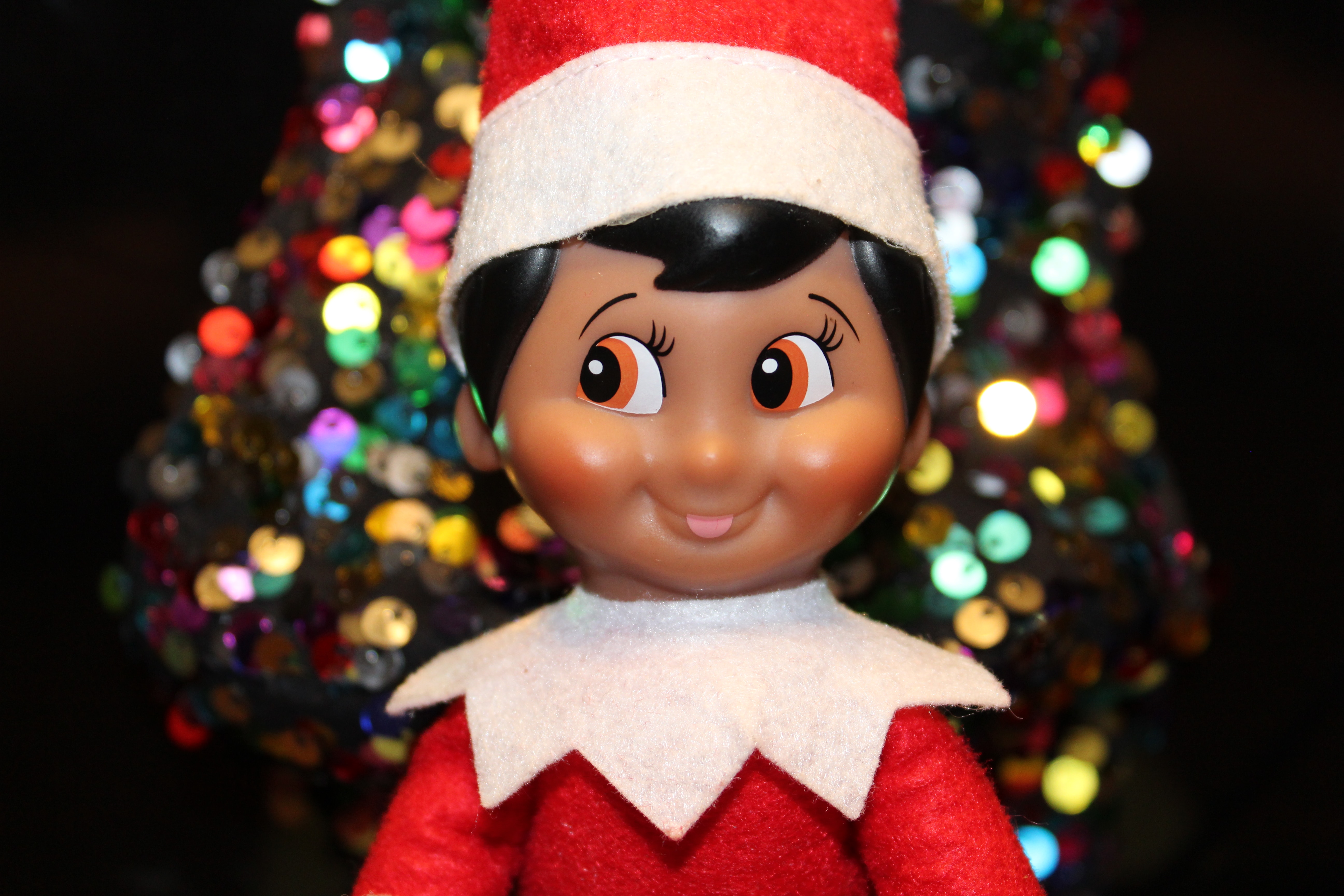Elf on the Shelf – a ‘gangly festive poltergeist’

Photo: Misty Ladd, Unsplash
18 December 2023
By Dr Alice Vernon, Department of English and Creative Writing
Ten-year-old Helen wakes up one December morning to find her sock drawer open and its contents strewn across her bedroom floor. Downstairs, her little brother opens the kitchen door and sees ‘Behave’ ominously written on the table in Skittles.
It sounds as though there is a poltergeist on the loose in this house. The truth, however, is far more sinister than a mere ghoul; these children are being haunted by an Elf on the Shelf.
Originating from a 2005 book by Carol Aebersold and her daughter, the Elf on the Shelf is a US phenomenon that has, over the last few years, seeped into British households thanks to its popularity on social media. Parents originally just bought an elf doll to keep an eye on their children’s behaviour, but the trend has evolved so that each morning the elf is in a new position, frozen in the moment of doing something silly or, ironically, naughty. Scrolling through Instagram posts shows elves covered in flour in a mixing bowl, making snow angels on a bed of peas, eating cereal out of a shoe, or caught in the act of using a child’s toothbrush to scratch its bum. One thing becomes noticeably absent in most of these posts: the shelf. The Elf isn’t actually on the Shelf anymore; it’s morphed into a gangly festive poltergeist.
Despite the term ‘poltergeist’ meaning ‘noisy ghost’, modern parapsychology and psychical research doesn’t recognise the phenomenon as being a ghost at all. A poltergeist isn’t a spirit of deceased person, but a tormenting force rooted to an individual or location. More specifically, it is rooted – like the Elf on the Shelf – to a child. The Sauchie poltergeist, for example, surrounded 11-year-old Virginia Campbell in rural Scotland in the winter of 1960. Furniture in her bedroom moved around, her pillow rotated beneath her head, and strange knockings and were heard throughout the house. Virginia personified the phenomena, calling the perpetrator ‘Wee Hughie’. A psychical researcher investigating the case, A.R.G. Owen, wrote in his book ‘Can We Explain the Poltergeist?’ (1964) that Virginia had recently moved to Sauchie, and to a new school, and while physically healthy she was clearly shy, anxious and lonely. While he didn’t think Virginia was faking the phenomena, as so many poltergeist cases turn out to be, he did admit that they were “in part subconsciously motivated as attention-seeking devices.” Wee Hughie dissipated as Virginia became more settled in her new home and school.
But it’s adults, not children, who are now mimicking poltergeist phenomena through the Elf on the Shelf. Children are told not to touch the elf during its appearance in the run-up to Christmas, or else it loses its magic. While the whole point of the exercise is to encourage children to be good, the pressure appears to be on their parents and guardians to come up with ever-increasing feats of tomfoolery. Moreover, there seems to be a preoccupation with capturing these on social media to compare with other families’ elves. Even beginning to type ‘Elf on the Shelf’ into Google immediately suggests variations of ‘ideas’, ‘ideas funny’, ‘ideas UK’ – suggesting a sense of anxiety and urgency over coming up with something better than the previous day’s pose. It sounds awfully familiar to the infamous 1940s case of Mrs Forbes, also known as Alma Fielding, a woman who seemed to be plagued by the spooky and destructive activity that normally affects children. Unlike Virginia, Mrs Forbes was eventually found to have faked her own haunting. Investigated by Hungarian-born psychoanalyst Nandor Fodor, Mrs Forbes was a troubled woman affected by childhood trauma, poor health, and a not especially thrilling marriage. The phenomena began with saucers spontaneously smashing, doors slamming shut, and clocks flying through the air. Fodor was entranced and spent a great deal of time with Mrs Forbes, witnessing and cataloguing the incidents. In ‘On the Trail of the Poltergeist’ (1958), we see how the poltergeist “developed” as Fodor paid attention to Mrs Forbes and invited her to meet and be investigated by numerous other psychical researchers. Things whizzing around the house were no longer as impressive, and Mrs Forbes started to be more ambitious, making peculiar objects materialise: flowers, a turtle and a waxbill finch. What began as a form of emotional release became shadowed by the pressure of needing to perform more and more miraculous paranormal feats in order to maintain the attention of her new friends.
The psychology surrounding the Elf on the Shelf may not be as complex and murky as poltergeist cases, but there are noticeable similarities. They both exist as an outlet for creating mischief without taking responsibility, but increasingly the new Christmas “tradition” follows in the poltergeist’s footsteps by being performative for the attention and admiration of others. If we don’t want the Elf to take on the poltergeist’s more sinister psychological connotations, perhaps it would be best to put it back on the Shelf.
